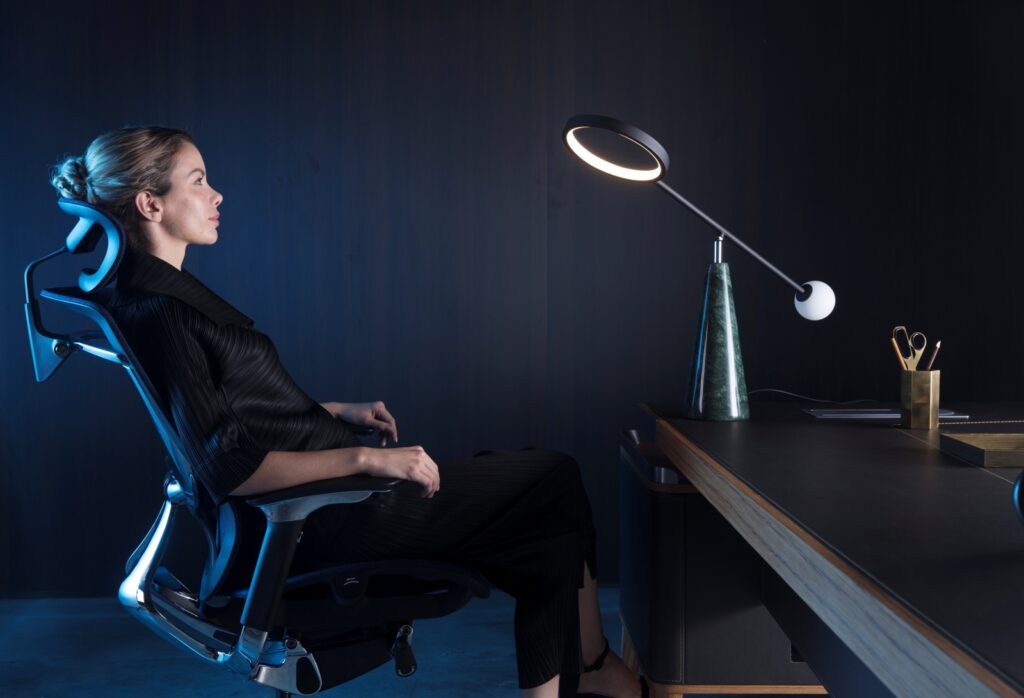How to Choose a Good Chair: The Importance of Test Results and Certification
When it comes to selecting a chair, whether for your office, home, or any other setting, it is essential to choose one that not only looks good but also offers the utmost comfort and safety. Identifying a good chair involves more than just aesthetics; it requires a thorough understanding of test results and certification standards. In this article, we’ll explore the key factors to consider when evaluating chairs based on test results and certification, ensuring you make an informed choice.

Chair shown: I-FIT (Paddle shift mechanism)
1. Ergonomics
Ergonomics is a crucial aspect to consider when assessing the quality of a chair. A well-designed chair should promote good posture, support the natural curvature of the spine, and offer adjustability to accommodate various body types and preferences.
Learn more about the key differences between a Regular chair and an Ergonomic chair here.
Look for chairs that have been certified by organizations like BIFMA (Business and Institutional Furniture Manufacturers Association). Their certification ensures that the chair complies with rigorous ergonomic and safety standards, offering you the best possible comfort and support.



2. Durability
A good chair should be built to withstand the test of time. Chairs that undergo rigorous testing to assess their durability are more likely to provide a long-lasting and reliable seating solution. Look for chairs that have been tested for their weight capacity, durability of materials, and resistance to wear and tear.
Certifications such as ANSI/BIFMA X5.1 or EN 1335 are good indicators of a chair’s durability. These certifications assess factors like the chair’s weight-bearing capacity and the strength of its materials, ensuring that the chair is built to last
Video credits: From BIFMA
3. Safety
Chair safety is of utmost importance, especially if the chair will be used in a commercial setting or at home. Safety certifications ensure that a chair meets specific safety standards, which can include fire resistance, stability, and chemical emissions. Look for chairs that have undergone rigorous safety testing and have been certified by reputable organizations.
The UL (Underwriters Laboratories) certification, for example, ensures that a chair meets safety standards for electrical and fire safety.
Additionally, the GREENGUARD certification evaluates a chair’s low chemical emissions, promoting better indoor air quality.
4. Comfort
Comfort is a highly subjective aspect of chair selection, but it’s nonetheless vital. A comfortable chair can significantly enhance your well-being and productivity. While there’s no universal certification for comfort, consider testing chairs personally or reading user reviews to get a sense of how comfortable they are for different body types and preferences.
5. Environmental Considerations
For those concerned about the environment, chairs that are certified as environmentally friendly can be a priority. Look for certifications such as GREENGUARD, which not only assesses safety but also environmental impact by evaluating a chair’s low chemical emissions.

Greenguard
Basis for the Leadership in Energy and Environmental Design (LEED) credit for low-emitting furniture

Greenguard Gold
Includes health-based criteria for additional chemicals and also requires lower total VOC emissions levels to ensure that products are acceptable for use in environments such as schools and healthcare facilities.
6. Warranty and Customer Support
A manufacturer’s warranty and customer support are also essential when identifying a good chair. A company that stands behind its products with a solid warranty and responsive customer support is more likely to produce high-quality chairs.
In conclusion, identifying a good chair involves considering a range of factors, including ergonomics, durability, safety, comfort, and environmental considerations. Test results and certification standards play a significant role in assessing the quality and reliability of a chair. By looking for chairs that meet or exceed these standards, you can make an informed choice and invest in a chair that not only looks good but also provides long-lasting comfort and safety.
Conclusion
Before purchasing your next chair, it is essential to ensure that you are making a well-informed choice. When talking to the seller, ask for these certifications to aid in your selection process.
BIFMA Certification: For assurance of ergonomic design and quality, look for chairs certified by the Business and Institutional Furniture Manufacturers Association.
Durability Certifications: Seek chairs that meet ANSI/BIFMA X5.1 or EN 1335 standards to ensure they can withstand wear and tear.
Safety Certifications: Verify if the chair holds certifications like UL (Underwriters Laboratories) for electrical and fire safety and GREENGUARD for low chemical emissions.
These certifications will help you choose a chair that offers comfort, durability, safety, and environmental responsibility, ensuring you make a wise investment.
Other Certifications that you might come across


SGS, TUV and Intertek are all Testing and Certification companies. They are often referred to as “third-party testing and certification organizations” or “independent testing and certification bodies.” These organizations play a critical role in assessing and verifying the compliance of products, systems, and services with various industry standards, regulations, and safety requirements.
Explore Office Chairs with such Certifications now

Chair shown: I-FIT (Paddle shift mechanism)


